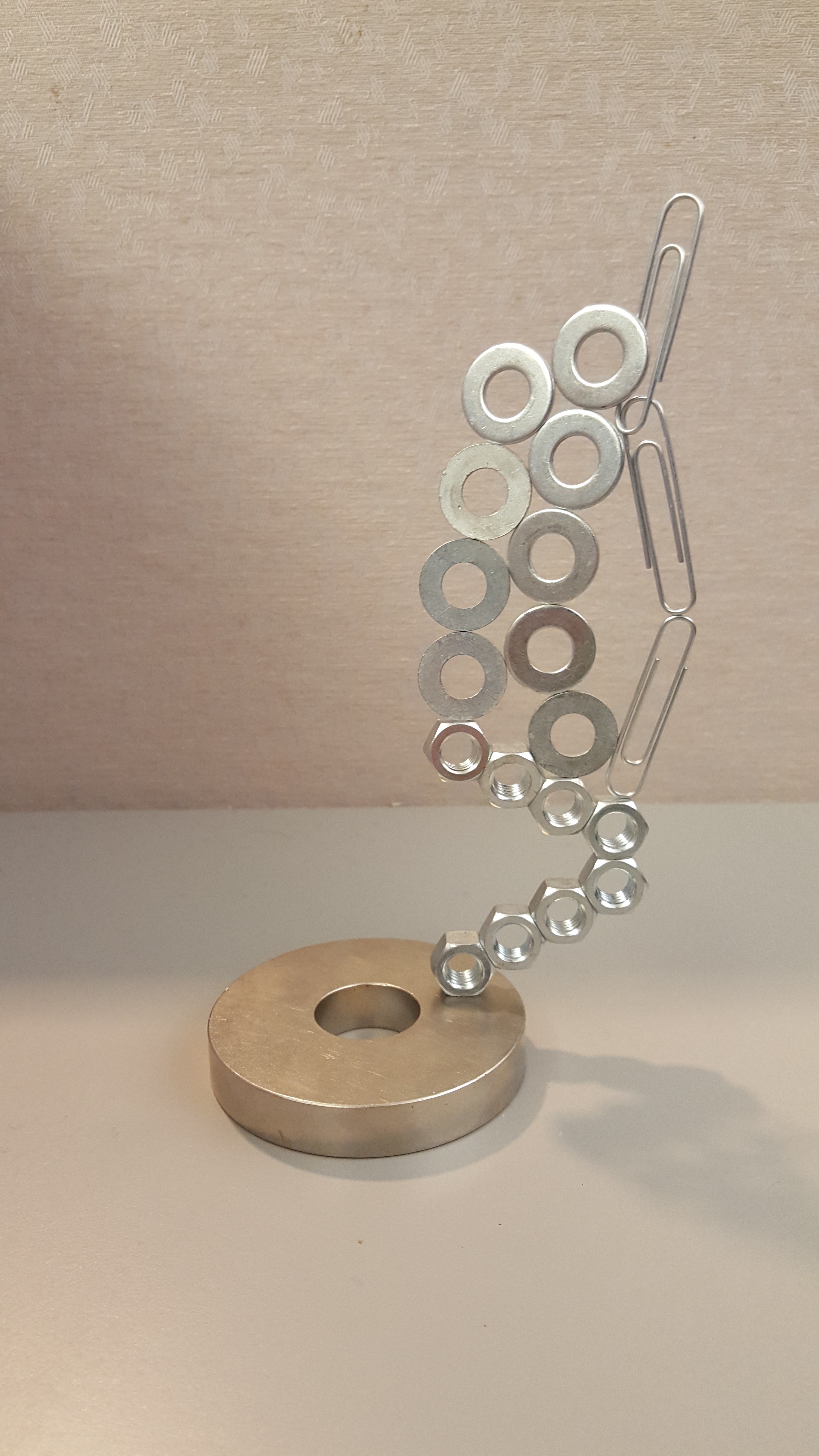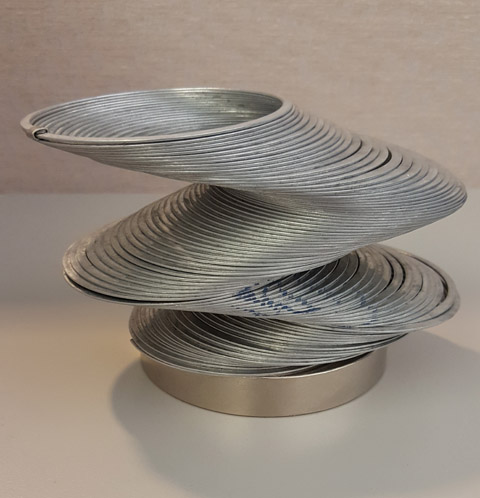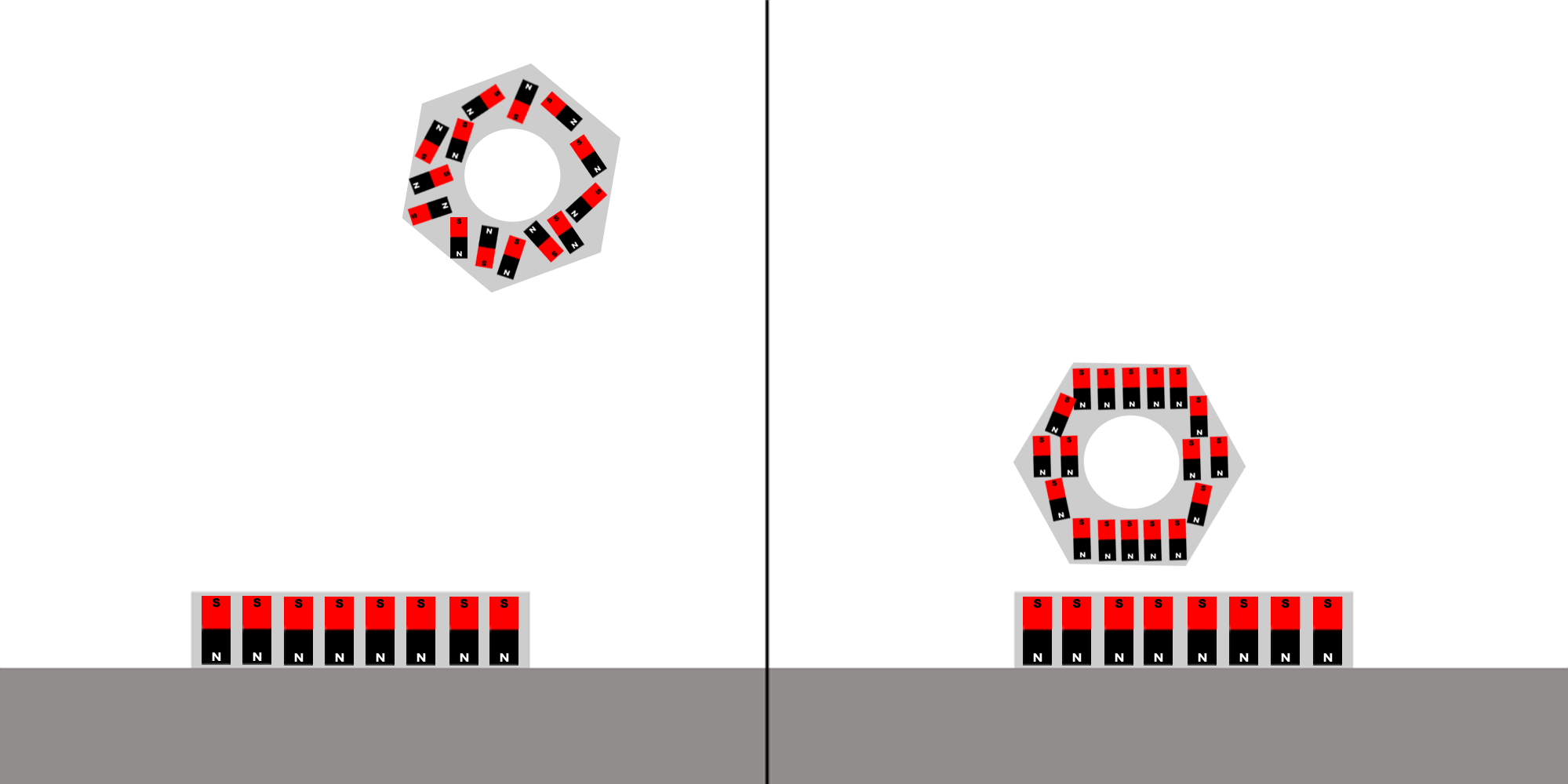Surprising Sculptures with Magnetic Magic

There's something almost magical about the way magnets bring physics to life—they take the invisible and make it tangible, turning field lines and long-range forces into something you can physically feel. It's even said that, as a child, Albert Einstein was entranced by a magnetic compass that he'd been given. Who knows how different the world might be today, if he hadn't received that gift? Bring some magnetic magic into your home and combine art with science in this fun activity!
What you'll need:
- One large rare earth magnet (we've had great luck with Applied Magnets)
- any number of small iron or steel objects—washers, nuts, and metal slinkies are particularly fun, but even paperclips will do.
- parental supervision—powerful magnets can be dangerous, especially if you're working with more than one at a time.
What to Do
This part is easy—let your creativity flow! Build sculptures out of your metal objects, using the magnet as the base. You'll find that structures which would ordinarily be impossible come together with ease, thanks to the magnet's ability to polarize iron objects.

Placed on top of a rare earth magnet, this otherwise-ordinary iron slinky will retain unusual structures.
What's Going On?
You've probably noticed that not all metal objects are attracted to magnets. In fact, there are only a few substances that are what we call ferromagnetic—meaning they'll stick to magnets. But how does this happen, and how does a magnet seem to transfer its magnetism to the objects it's touching?
Every magnet has a north pole and a south pole, and this is the property that gives rise to magnets' amazing behavior. Alike poles attract one another, while opposite poles repel—but why are some materials magnetic and not others?
At a molecular level, every atom acts like a tiny magnet. In most materials, these molecular-scale magnets are oriented sort of randomly, pointing in all different directions, so the magnetic field of any one atom is canceled out by the fields of those around it.
In a magnet, though, the atoms' fields are aligned, so they add together in strength rather than canceling out, and the result is something that's got strong enough magnetism to be felt with your hands when you try to push two alike poles together.
Iron and other materials that can be attracted to magnets are somewhere in between these two cases. The magnetic orientations of their atoms are mostly random under ordinary circumstances, but they're more free to move around than in non-ferromagnetic materials. When we bring an iron object into contact with the south pole of a magnet, all the north poles in the object are attracted to it, and swing around to face the magnet's south pole.

This has the effect of turning the iron into a magnet—when the north poles in a piece of metal are all pointing downward, the south poles are all pointing up, which means that the iron itself is now effectively a magnet, and will behave the same as one. As a result, you can build chains of ferromagnetic objects, like in the picture above; as long as one of them is connected to a powerful enough magnet, the whole thing will stick together nicely.
Apply It!
How might you use a strong permanent magnet to make another, weaker permanent magnet out of something that's ferromagnetic?














